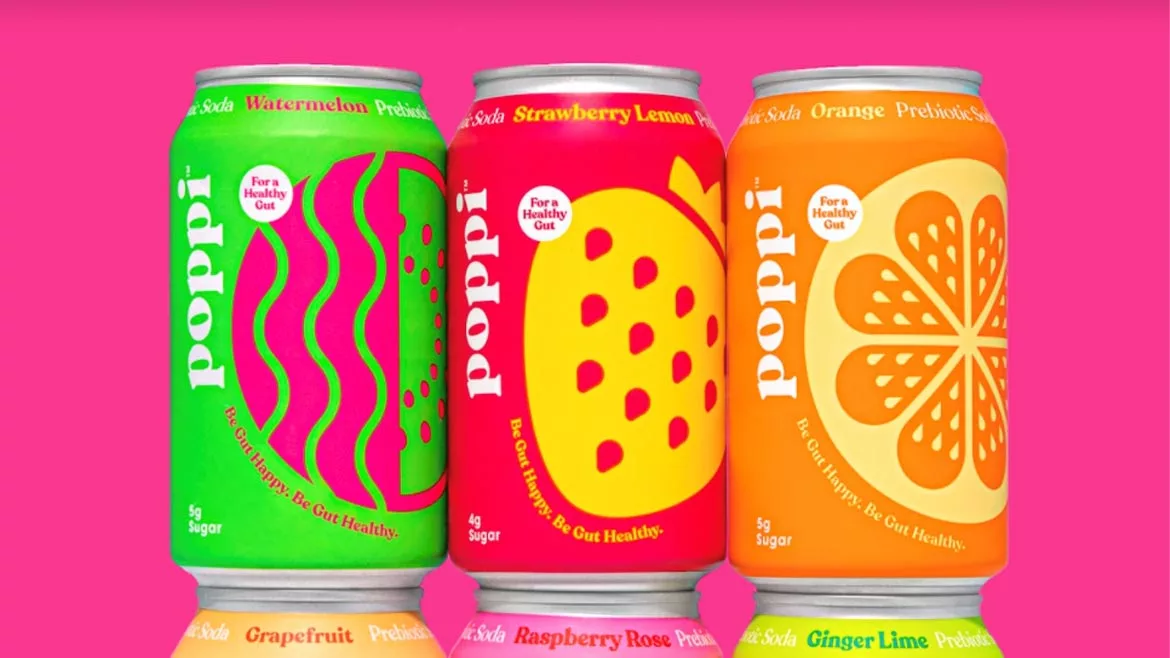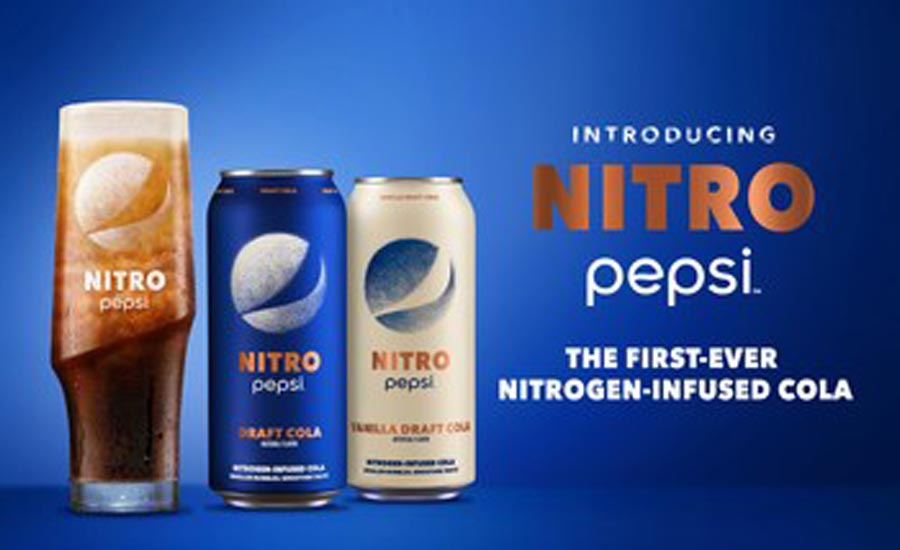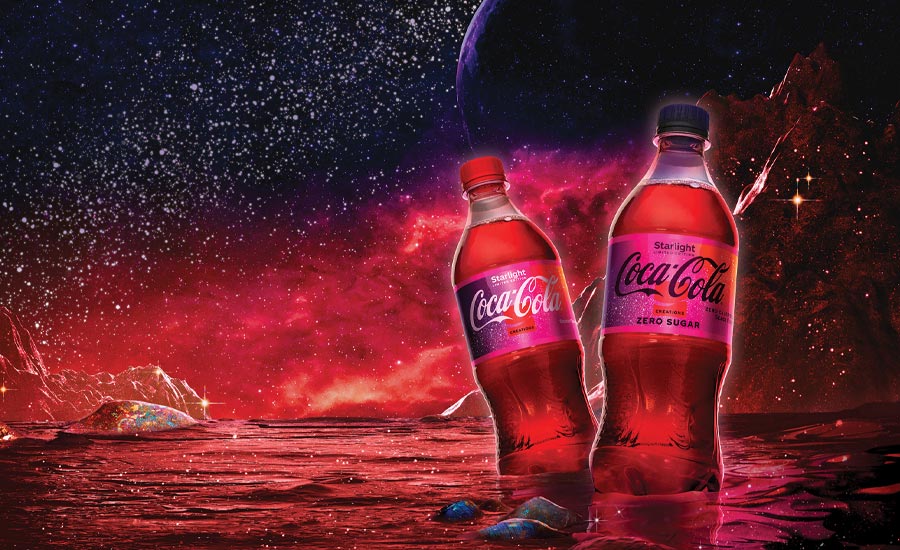Carbonated soft drink market seeks out balance of health, indulgence
Coca-Cola, Pepsi deliver new innovations to soft drink market

Image courtesy of Poppi
Iconic basketball player Kobe Bryant amassed a career that stood out. He was the Los Angeles Lakers’ all-time leading scorer, an NBA league MVP, and a two-time Finals MVP. Yet, in 2014, the Lakers began its NBA season 0-4. That year, when asked about the Lakers’ poor starting performance, Bryant said: “Everything negative — pressure, challenges — is all an opportunity for me to rise.” Similarly, as the carbonated soft drink (CSD) market faces increased consumer demand for functional beverages, CSD production is expected to “rise” by continuing to develop new products that offer healthier ingredients, as well as new taste innovations.
Yet, as the pandemic-enforced reduction in out-of-home consumption has posed challenges for the CSD category, brands are experimenting to find the right balance between health and indulgence, experts note.
As demand for soft drinks have tempered, following the surge in 2020, soft drink production revenue is estimated to have declined in 2021, notes Jacqueline Hiner, senior technical analyst and team lead at New York-based IBISWorld.
“Despite this downward trajectory, there has been an increased demand for functional beverages, rather than more traditional sodas with flavor syrups,” she explains. “Instead, consumers have increasingly opted for beverages with key beneficial ingredients, such as collagen, probiotics, or beverages that are sweetened with fruit juice rather than artificial sweeteners.”

Image courtesy of PepsiCo
Additionally, consumers are much more aware of the ingredients used in diet beverages, which often are artificial, Hiner says. “In turn, consumers have shifted toward low-calorie sweeteners that have additional health benefits such as monk fruit, stevia, or small quantities of fruit juice, driving a shift in CSD production.
“Most notably, a rising popularity of non-alcoholic beverages has driven consumers to shift from ‘free from’ drinks in favor of functional beverages with added health benefits and tonics,” she continues. “A lot of these new functional beverages have focused on gut health with both prebiotics and probiotics.”
For instance, to meet the consumer demand for beverages that promote a healthy lifestyle, Dallas-based Poppi manufactures prebiotic soda that combines real fruit juice with apple cider vinegar.
“The modern consumer has become savvy to what they buy and consume, especially when it comes to vetting ingredient lists,” said Poppi’s Co-founder and Chief Brand Officer Allison Ellsworth, in a statement. “When creating Poppi, I was in the same headspace — determined to create a delicious tasting drink great for gut health, with only real, clean ingredients.”
As smaller brands have utilized health benefits, particularly to improve gut health, to expand to more health-conscious consumers, some large scale CSD producers have been offering caffeinated soft drinks to tap into new markets, Hiner notes.
“Additionally, companies have been using functional ingredients as flavoring, such as herbal blends for non-alcoholic beverages alternatives to common cocktails,” she says.

Image courtesy of The Coca-Cola Co.
New, fun innovations for CSDs
With the pandemic, as changes to daily routines including working and learning from home have created new opportunities for packaged CSDs, brands also have leaned into innovation to help sustain this momentum, according to Chicago-based Mintel’s “US Carbonated Soft Drinks Market Report 2021.”
“Even before the pandemic, as the largest non-alcoholic beverage category, CSDs were showing signs of renewal, finding modest growth that has topped $39 billion,” it states. “This growth was largely fueled by innovation that worked to lessen a not so healthy reputation.
“Still, the hallmarks of the category reflect its dominance and its growth in 2020: products that deliver on enjoyment, refreshment and nostalgia. While the non-alcoholic beverage industry grows increasingly crowded, brands can remind consumers of why they love CSDs while using innovation to keep consumers treating themselves with CSDs,” it continues. “Despite a competitive non-alcoholic beverage landscape, the power of brands and the dedication of consumers is clear: more than half of U.S. adults consume CSDs multiple times weekly or more.”
In February, Purchase, N.Y.-based PepsiCo launched its newest innovation: Nitro Pepsi. Nitro Pepsi is a nitrogen-infused cola that’s actually softer than a soft drink ― it's creamy, smooth and has a cascade of tiny bubbles topped off by a frothy foam head, the company says. This is the first time this type of widget technology, often seen in beer and coffee products, is being applied to the cola category, it adds.
“While soda has been a beverage of choice for so many consumers over the past century, some people still cite heavy carbonation as a barrier to enjoying an ice-cold cola,” said Todd Kaplan, vice president of marketing for Pepsi, in a statement. “With this in mind, we wanted to come up with a new way for people to enjoy delicious Pepsi cola, but with a new experience around the bubbles."
To further engage consumers, Atlanta-based The Coca-Cola Co., unveiled its new global innovation platform Coca-Cola Creations, along with its first limited-edition product: Coca-Cola Starlight. Coca-Cola Creations will take the iconic Coca-Cola trademark and lend it to new expressions, driven by collaboration, creativity and cultural connections, the company says. Through limited-edition, sequential releases, Coca-Cola Creations will introduce new products and experiences across physical and digital worlds, it adds. Coca-Cola Creations was developed under the “Real Magic” brand platform, which was revealed in late 2021.
“For over a century, Coca-Cola has maintained its iconic status around the world as a symbol of optimism that has refreshed generations. When we launched ‘Real Magic,’ we wanted to connect with and celebrate the experiences that bring joy to young people today, and that has taken us to an exciting new territory,” said Oana Vlad, senior director of global brand strategy for The Coca-Cola Co., in a statement. “Coca-Cola Creations aims to surprise, delight and engage global audiences through magical and unexpected tastes, moments and collaborations ― something we know our fans have come to expect from us.”
However, analysts don’t expect innovations to shift the breakdown of CSD flavor share much in the next few years. In a report from New York-based Beverage Marketing Corporation (BMC) titled “Carbonated Soft Drinks in the U.S. through 2025: Market Essentials,” the market research firm expects that cola will continue to lose volume through 2025 ― with a projected 49.4% share ― while pepper will ascend to the second (11.8%) upending heavy citrus (11.3%).
Balancing taste and wellness
As the CSD category still faces some headwinds, innovation that bridges the gap between consumer interest in well-being and indulgence is key to growing the market, experts note.
Gary Hemphill, managing director at BMC, adds that as brands continue to reassure consumers over sugar content, taste is equally important.
“Today’s consumers want less sugar ― no question,” he says. “But they also don’t want to sacrifice on taste.”
Additionally, as flavor innovation has long been a means to boost sales in the CSD category, taste improvements in diet CSDs and improved marketing has helped to boost the category’s performance as well, Hemphill notes.
“The diet CSD category has evolved with the help of sweetener innovation along with better and broader marketing,” he says. “The marketing focus today is more on positioning of a great-tasting CSD that just happens to have zero calories.”
Still, an overall challenge with flavor innovations is to develop sustainably successful new flavors, Hemphill notes. “All too often flavor innovation in CSDs has resulted in a boom-bust phenomenon whereas a new flavor may result in strong sales its first year, but fall flat thereafter,” he says.
Nevertheless, as the overall CSD market continues on the functional beverage trend; new innovations are a way of making the category more relevant to today’s consumers, Hemphill notes.
“I’d expect an assortment of innovation in the CSD category in the years ahead,” he says. “More hybrids, more functionality, more new flavors, and more diet/reduced-calorie innovation to name a few.”
Looking for a reprint of this article?
From high-res PDFs to custom plaques, order your copy today!





